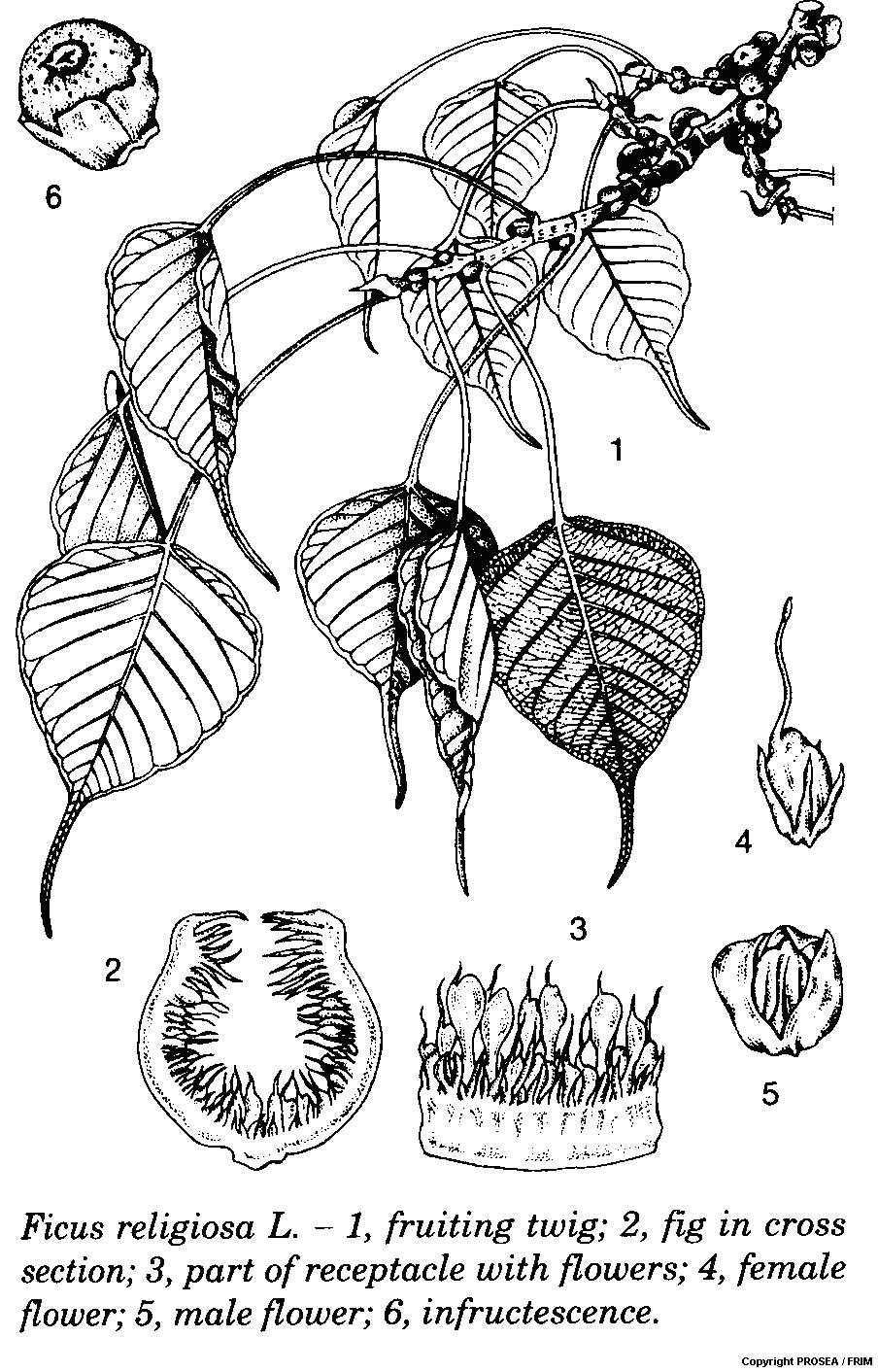Ficus religiosa L.
Family
Moraceae
Synonyms
Ficus caudata Stokes, Ficus superstitiosa Link, Ficus peepul Griffith.
Vernacular Names
| English |
Bo tree, bodhi tree, pipal tree. |
| Indonesia | Bodhi. |
| Thailand | Pho see ma haa pho (Central), yong (Shan-Mae Hong Son), salee (Northern). |
| Cambodia | Dom pur. |
| Laos |
Pho. |
| Vietnam | C[aa]y b[oof] d[eef], c[aa]y da, c[aa]y da b[oof] d[eef]. |
Geographical Distributions
Ficus religiosa is originally from the Himalayas to southern China (Yunnan), Vietnam and northern Thailand; nowadays is widely cultivated in the Malesian region but also in e.g. the Middle East, northern Africa and the United States.
Description
Ficus religiosa, which can reach up to 20 m tall, is an evergreen or deciduous banyan or small to medium-sized tree. Its bark surface is fissured and grey.
The leaves are arranged spirally, ovate-cordate to ovate, measuring 6-26 cm x 4-16 cm, with subcordate to truncate base, caudate at apex, often with uneven or sinuous margin, with 6-9 pairs of lateral veins, hairless and with stipules up to 1.5 cm long. The figs are axillary, paired, sessile, nearly spherical, measuring 10-15 mm in diametre, smooth, pink, purple or black when ripening.
The flowers are with free tepals where the male flowers are arranged in 1 row, sessile and with 2-3 tepals while the female flowers are sessile or with short stalk and 3-4(-5) tepals.
Ecology / Cultivation
Ficus religiosa occurs naturally in submontane forests.
Line Drawing / Photograph
References
- Plant Resources of South-East Asia No.12(1): Medicinal and poisonous plants 1.




